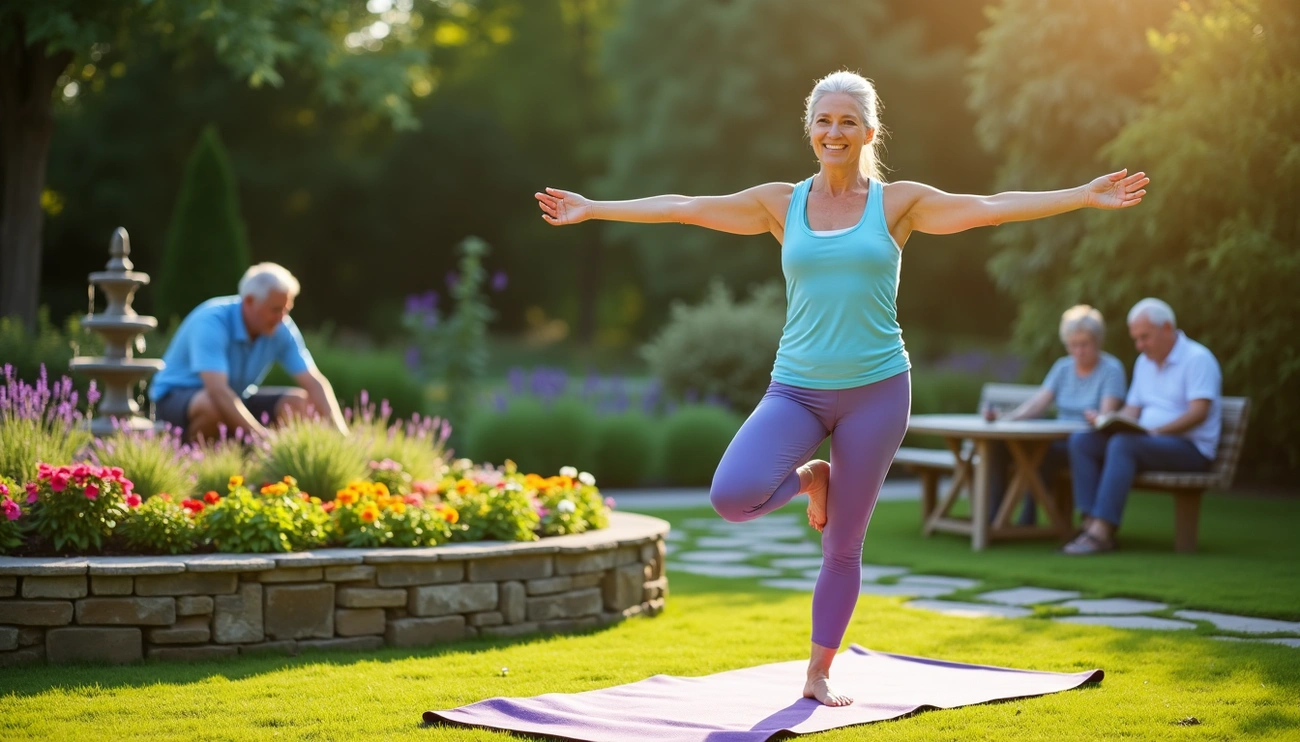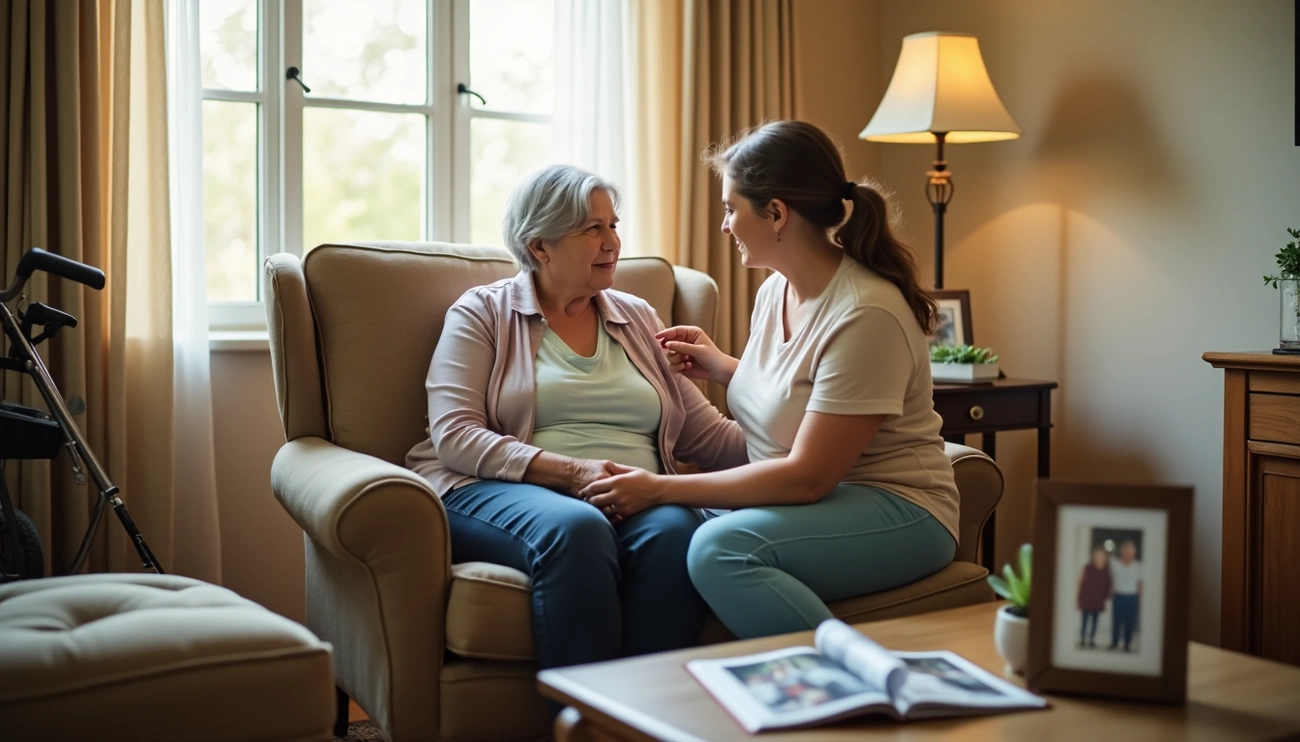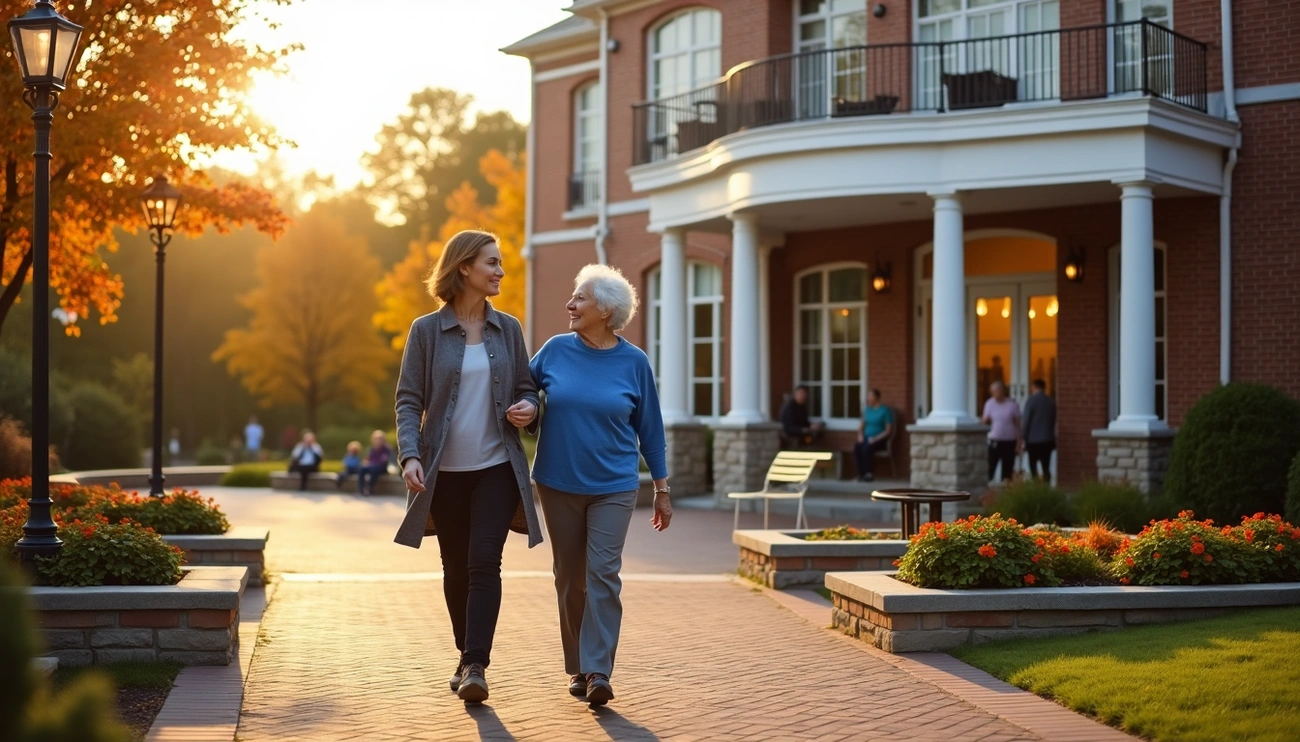Holistic aging approaches offer an alternative to the standard medical model focusing on medications and procedures, research shows. Studies indicate this comprehensive strategy delivers better outcomes for aging adults compared to traditional healthcare methods. Regular physical activity reduces cardiovascular disease, stroke, and diabetes risk while simultaneously improving mental health and delaying dementia onset, according to multiple medical reports. Women over 50 who engage in strength training can effectively counteract aging’s physiological effects, creating stronger bodies that function as if years younger.
The holistic approach extends beyond exercise to include proper nutrition, cognitive engagement, and social connection. Scientists have identified aging as a multifactorial process affected by genetics, dietary choices, physical activity levels, and environmental conditions. Research demonstrates that maintaining meaningful social relationships leads to extended lifespan and enhanced mood states. Similarly, activities that stimulate the brain help maintain cognitive function throughout aging. Medical studies reveal that addressing age-related hearing loss significantly enhances quality of life by improving communication abilities and strengthening personal relationships. This guide examines holistic aging fundamentals and practical strategies that can substantially improve the experience of growing older.
Understanding Holistic Aging
The holistic aging concept marks a significant shift from traditional approaches to growing older, research shows. While conventional healthcare typically targets individual symptoms, holistic methods consider the entire person and their interconnected bodily systems.
What is holistic aging?
Holistic aging examines the complete individual—mind, body, and spirit—in the pursuit of wellness and fulfillment as people age. Researchers define holistic aging as an integrated process influenced by biological factors, behavioral choices, and social/physical environment. Studies indicate humans function as whole systems that cannot be separated from their surrounding environments.
The philosophy centers on an interdependent system where all elements affect each other. Rather than treating isolated symptoms, holistic aging considers multiple life aspects simultaneously: physical condition, mental sharpness, emotional health, social relationships, environmental factors, financial security, and spiritual practices. These elements work together to create a balanced aging experience, according to multiple studies.
How it differs from traditional aging approaches
Traditional medical models focus primarily on treating specific symptoms or diseases in isolation, research shows. Holistic aging instead addresses underlying causes while supporting the body’s natural healing mechanisms.
Conventional medicine typically relies on pharmaceutical solutions and surgical procedures, while holistic approaches incorporate complementary therapies alongside standard treatments when appropriate. Research indicates integrative nursing practices reduce healthcare costs while simultaneously improving patient satisfaction scores and quality of life measures.
Standard medical views often portray aging as a series of inevitable physical breakdowns requiring intervention. Holistic perspectives instead frame aging as a natural process enhanced through intentional practices and preventive care. The goal shifts from preparing for “old age” to embracing each “new age” with vitality and purpose.
The role of mind, body, and environment
The mind-body-environment connection forms holistic aging’s foundation. Studies demonstrate maintaining strong connections between these elements is essential for well-being in later years.
Mental wellness benefits from cognitive stimulation through meaningful activities and skill acquisition. Research shows mindfulness practices reduce stress levels and improve attention by focusing awareness on present moments.
Physical wellness requires appropriate exercise, nutrition, and preventive care measures. Studies indicate movement-based mind-body therapies like Tai Chi and yoga provide particular benefits by coordinating breathing patterns, cognitive engagement, and physical movements.
Environmental factors significantly impact aging outcomes. Research demonstrates nature exposure reduces blood pressure, heart rate, muscle tension, and stress hormones. Data shows many older adults prefer aging-in-place, maintaining familiar surroundings with established social connections.
Physical Wellness as a Foundation
Physical activity forms the cornerstone of healthy aging, research shows. Regular movement strengthens multiple body systems while enhancing cognitive function and emotional health in seniors.
Exercise routines for older adults
Health guidelines recommend adults over 65 engage in at least 150 minutes of moderate-intensity aerobic activity weekly, plus muscle-strengthening exercises targeting all major muscle groups on two or more days. Alternatively, 75 minutes of vigorous activity provides comparable benefits. Despite these recommendations, physical inactivity remains common, affecting one in three men and half of all women by age 75.
Swimming provides an excellent low-impact option that builds muscle strength while reducing joint stress. Yoga practice improves balance, builds strength, and enhances mobility for older adults. For those seeking simplicity, data shows walking 8,000 steps daily correlates with a 51% lower mortality risk from all causes.
Nutrition for longevity and vitality
Nutritional requirements shift as metabolism naturally slows with age. Studies indicate plant-based Mediterranean diets substantially reduce mortality risk, with strict adherents showing 86% higher likelihood of healthy aging at 70 years compared to those following different dietary patterns.
Older adults need fewer calories but require increased protein, vitamin D, calcium, and vitamin B12. Protein intake between 0.45-0.54 grams per pound of body weight helps maintain muscle and bone integrity. Foods containing high levels of polyphenols—including berries, leafy greens, coffee, and olive oil—show strong associations with improved brain function and extended lifespan.
Preventive care and regular screenings
Regular health screenings play a critical role in early disease detection. Annual wellness visits enable doctors to assess routine health maintenance and screen for fall risks, depression, and cognitive changes.
Cancer screening remains essential, with mammograms recommended every 1-2 years for women 65+ and colorectal cancer screening through colonoscopy every decade or at-home testing every three years. Bone density tests for osteoporosis screening are advised for women over 60 and men with specific risk factors.
Immunizations, including high-dose flu vaccines and pneumonia protection, provide vital defense against preventable diseases. These comprehensive preventive measures help older adults identify potential health issues early, resulting in better outcomes and maintained independence.
Mental and Emotional Health in Aging
Mental and emotional wellness becomes a critical component of healthy aging, studies show. Research indicates the brain requires regular stimulation to maintain cognitive function, similar to how muscles need exercise to preserve strength and flexibility.
Cognitive stimulation and lifelong learning
Research reveals 55% of Americans age 45 and older actively pursue learning new things, with history, food, mental health, and technology ranking as preferred subjects. Scientists have found that learning new skills like quilting or photography enhances memory function by creating additional neural pathways in the brain.
Senior adults engaging in hobby activities show decreased dementia risk compared to those spending under 30 minutes daily on such pursuits. Activities including reading books, solving puzzles, and playing strategic games provide cognitive protection beyond mere entertainment value.
Data shows 76% of older adults prefer independent reading as their primary learning method, though 72% also utilize online platforms like YouTube when acquiring new information. This combination of traditional and digital learning approaches helps maintain brain flexibility throughout the aging process.
Managing stress and emotional resilience
Stress affects older adults through distinct physiological mechanisms compared to younger populations. Medical research indicates cortisol, the primary stress hormone, increases steadily after middle age. Studies demonstrate cortisol surges more strongly in older adults and requires more time to return to baseline levels. This extended cortisol exposure potentially damages memory centers in the brain, particularly the hippocampus.
Despite these challenges, older adults frequently demonstrate substantial emotional resilience. Studies identify medium to high-level resilience in 73% of the aging population, providing protection against depression and anxiety disorders. Resilience development stems from several identified factors:
- Strong social connections and relationships
- Hopefulness and optimism
- Effective coping strategies
- Community involvement
- Spirituality or sense of purpose
Holistic aging psychology and mindfulness
Mindfulness practices offer powerful tools for psychological wellness in aging populations. Older practitioners report feeling more relaxed, sleeping better, and experiencing improved mental clarity. One significant study found individuals with higher trait mindfulness experienced less disability, fewer negative emotions, and higher one-year survival rates compared to less mindful counterparts.
Regular meditation practice appears to rewire neural circuitry, enhancing concentration while reducing negative thought patterns. Medical research confirms mindfulness-based interventions provide substantial benefits for mood disorders, anxiety conditions, and stress-related health problems, offering non-pharmaceutical approaches to emotional wellness.
The connection between mental and physical health becomes increasingly evident with advancing age, positioning psychological well-being as essential to comprehensive aging approaches.
Social and Spiritual Dimensions of Aging
Social and spiritual aspects form essential components of holistic aging alongside physical and mental wellness, research indicates. Studies consistently demonstrate meaningful connections affect not only psychological well-being but measurable physical health outcomes.
Building and maintaining social connections
Social isolation currently affects more than one-third of adults aged 45 and older, according to recent statistics, with almost one-fourth of people aged 65+ experiencing significant social disconnection. This isolation creates serious health consequences beyond mere loneliness—medical research links it directly to increased risk of stroke, heart disease, dementia, and premature death.
Adults maintaining meaningful social relationships experience notable health benefits, including reduced stress levels, improved sleep quality, and longer lifespans. These connections provide seniors with more than emotional comfort—they deliver measurable health advantages. Research demonstrates people with robust social networks show decreased depression risk, lower blood pressure readings, and generally maintain healthier body mass indices.
Five effective strategies for expanding social connections include:
- Taking inventory of existing relationships
- Joining clubs or faith-based organizations
- Volunteering for meaningful causes
- Extending and accepting social invitations
- Scheduling regular contact with friends and family
Finding purpose through hobbies and volunteering
Volunteer activities create significant purpose during retirement years. Health surveys reveal approximately 80% of senior volunteers report good, very good, or excellent health compared to just 50% among non-volunteers. Nearly half noted health improvements after only one year of service, while two-thirds experienced reduced isolation feelings.
AmeriCorps Seniors currently connects over 143,000 volunteers aged 55+ with community service opportunities annually. Participants show measurable decreases in anxiety, depression, and loneliness symptoms, with 84% reporting stable or improving health conditions after one year of participation.
Spiritual practices and inner peace
Spirituality grows increasingly significant with advancing age. Religious and spiritual activities function as important sources of social engagement while providing many seniors a core component of successful aging. Medical research positively associates these practices with improvements in common health concerns, particularly cardiovascular conditions and mental health challenges.
Medical studies found women regularly attending religious services demonstrated lower cardiovascular and cancer mortality rates, while Black men participating frequently in religious activities showed a remarkable 47% reduction in all-cause mortality.
Spiritual engagement provides practitioners with inner strength, emotional comfort, ongoing hope, and valuable community connections. Meditation specifically offers seniors a pathway toward stress reduction, enhanced sleep quality, and better cognitive performance.
Conclusion
Research shows holistic aging represents a significant departure from traditional approaches to later life, according to multiple studies. Physical wellness emerges as the foundation of successful aging, with evidence indicating appropriate exercise and nutrition substantially reduce disease risk while improving overall quality of life. Cognitive stimulation and emotional resilience appear equally critical in maintaining mental sharpness and psychological health throughout aging, research confirms.
Data consistently demonstrates that meaningful social connections produce measurable health benefits, including lower mortality risk and improved cardiovascular outcomes. Studies similarly indicate spiritual practices provide inner strength and comfort that many older adults find essential. Preventive healthcare measures allow for early identification of potential issues, resulting in better outcomes and extended independence, according to healthcare experts.
Traditional medical approaches primarily focus on treating isolated symptoms with pharmaceuticals and procedures, while evidence suggests holistic aging provides a more complete alternative. Medical research indicates the goal extends beyond simply extending lifespan to improving quality of life during those additional years. The National Institute on Aging reports that small, consistent changes across multiple wellness dimensions typically yield greater benefits than major interventions in any single aspect.
Research demonstrates maintaining health in later years doesn’t require fighting against natural processes, but rather adopting evidence-based practices that support the body’s inherent capabilities. Scientists have found the most successful approaches to aging incorporate physical activity, proper nutrition, social engagement, and preventive care as part of an integrated strategy that respects the interconnected nature of human health.
FAQs
Q1. What is holistic aging and how does it differ from traditional approaches? Holistic aging is a comprehensive approach that considers the entire person—mind, body, and spirit—in pursuit of optimal wellness. Unlike traditional methods that focus on treating specific ailments, holistic aging addresses the interconnected aspects of a person’s life, including physical health, mental acuity, emotional resilience, social connections, and spiritual practices.
Q2. How important is physical activity for older adults? Physical activity is crucial for older adults. It’s recommended that adults over 65 aim for at least 150 minutes of moderate-intensity aerobic activity weekly, along with muscle-strengthening activities. Regular exercise not only improves physical health but also supports cognitive function and emotional well-being.
Q3. What role does nutrition play in healthy aging? Nutrition plays a vital role in healthy aging. As metabolism slows with age, older adults require fewer calories but need more protein, vitamin D, calcium, and vitamin B12. Plant-based Mediterranean diets have been linked to a lower mortality risk and a higher likelihood of healthy aging. Foods rich in polyphenols, such as berries and leafy greens, can improve brain health and longevity.
Q4. How can seniors maintain their mental and emotional health? Seniors can maintain mental and emotional health through various activities. Engaging in lifelong learning, pursuing hobbies, and practicing mindfulness can enhance cognitive function and emotional resilience. Regular mental challenges, such as learning new skills or solving puzzles, can help protect against cognitive decline.
Q5. Why are social connections important for older adults? Social connections are crucial for older adults’ overall well-being. Strong social networks are associated with reduced stress, better sleep, and a longer, healthier life. Seniors with meaningful social connections have a lower risk of depression, lower blood pressure, and tend to maintain a healthier body mass index. Volunteering and participating in community activities can help build and maintain these vital social connections.




